The surface layer of the epidermis is constantly renewed: the stratum corneum is rejected and replaced by keratinocytes - new cells. Due to unfavorable environmental conditions: climate, allergies, fungal infection, interaction with toxic substances, lack of moisture, nutrients and vitamins, hereditary predisposition, the stratum corneum begins to be rejected intensively, while the formation of keratinocytes is also activated. As a result, peeling appears on the face - what to do and how to restore health and beauty to the skin becomes a particularly significant problem.
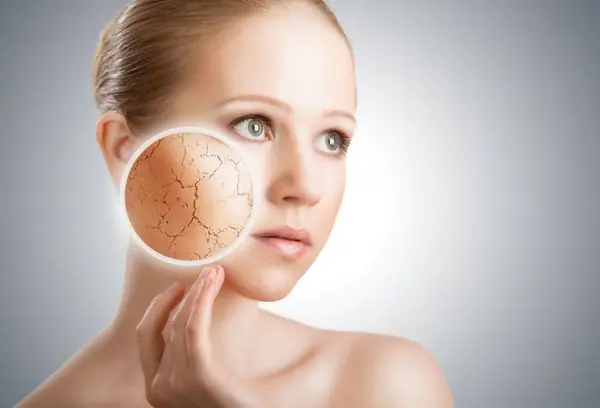
Causes of peeling skin
Sudden peeling on the face is a reason to think about it. This may be due to improper skin care or problems within the body.
- Lack of moisture. In 97% of cases, the skin begins to peel due to dehydration. Signs of a lack of fluid in the body also include thirst, dizziness, dry mouth, weakness, low blood pressure, nausea, and palpitations. Typically, such symptoms are caused by insufficient drinking, intense sweating, and the use of diuretic medications.
- Incorrect care. Peeling of the skin on the face, caused by improper care, most often occurs in people with sensitive skin types, which are characterized by an acute reaction to any external intervention.
- Incorrectly selected or low-quality cosmetics. Another reason why the skin on the face begins to peel off. This is more often observed in women, since it is the weaker sex who tend to get carried away with cosmetics.
- Unfavorable environment. These include temperature changes, exposure to direct sunlight on the skin, wind, and very dry air in office premises (especially in winter). In this case, the skin on the face peels off chronically, due to prolonged contact with the irritant, and in addition, dryness is observed. There may be mild redness, swelling, mild itching and burning, soreness, cracks, and thickening of the skin. Urticaria, rhinitis, asthma attacks, and conjunctivitis are not observed.
- Allergy. Redness and peeling can be caused by animal hair, pollen from flowering plants, and some medications. Problems with the skin stop if the irritant is removed.
- Diathesis. It develops as an allergic reaction, although experts do not consider it an allergy. Signs of diathesis can vary greatly, but in most cases there is dryness and swelling, the skin turns red, itches, and flakes. Particular discomfort is felt at night. Sometimes vesicles and papules appear on the face. Diathesis can be contact (for example, with the local use of inappropriate or low-quality cosmetics, ointments) and atopic, which is a manifestation of an allergy to something (wool, pollen, some products).
- Avitaminosis. Peeling on the face may be due to insufficient intake of vitamins and minerals from food. As a rule, a lack of vitamins A and group B affects the condition of the skin in a similar way.
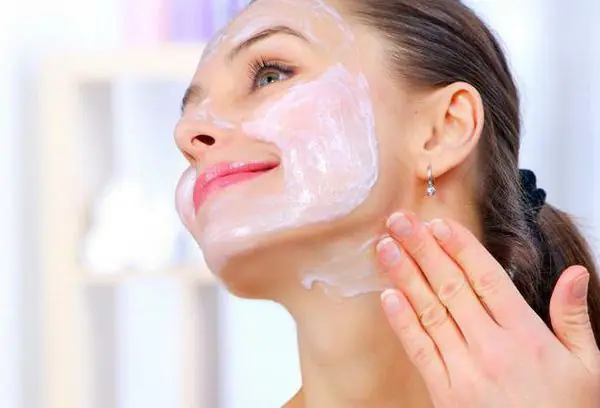
Insufficient consumption of keratin (vitamin A) is also manifested by night blindness, inflammation of the cornea and eye mucosa, bronchitis, urethritis and inflammatory processes in the intestinal mucosa.
With a lack of vitamin B2, the mucous membranes of the eyes, the skin between the nose and upper lip, and on the eyelids become inflamed, ulcers appear in the corners of the mouth, cracks on the lips, muscle weakness, and anemia.
Vitamin B3 deficiency is manifested by general weakness, diarrhea, paralysis, in addition, hair loss, tongue inflammation, hallucinations, delirium, and insomnia are possible.
A lack of vitamin B6 is characterized by the development of fungal inflammations on the skin, anemia, insomnia, irritability, weakness and inflammatory processes on the mucous membranes.
Drowsiness, malaise, muscle pain, depression, increased fatigue and decreased blood pressure are characteristic signs of vitamin B7 deficiency.
Peeling of facial skin can also be associated with certain diseases:
- Ichthyosis. Signs of the disease are very dry, rough and rough skin due to a significant increase in the number of horn cells. Most often, due to ichthyosis, the skin on the face peels off in young children (1-4 years) and adolescents.
- Seborrheic dermatitis. The disease manifests itself in the form of itching, redness and flaking of the skin, affecting exclusively areas with a large number of sebaceous glands and hair. Develops as a result of decreased immunity, heavy sweating, stress, poor hygiene, alcohol consumption, and an unbalanced diet.
- Psoriasis. Red-pink spots with psoriasis flake and itch, rarely appear on the face (they can be seen on the forehead, temples, neck), more often they are localized on the body. Psoriasis is characterized by periods of remission and exacerbation. The disease is provoked by drinking alcohol, hypothermia, prolonged exposure to sunlight, stress, and taking medications.
In what cases is it necessary to consult a doctor?
If the skin on your face is peeling, this is not always a consequence of dehydration and a harmless lack of vitamins. In some cases, such skin problems indicate diseases that may worsen over time.
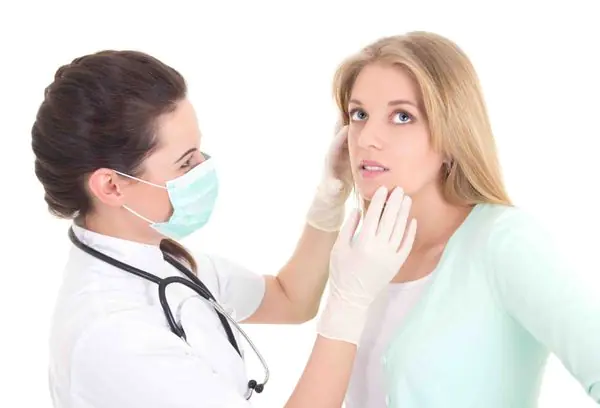
Signs that you need to see a doctor:
- dry, flaky skin that itches a lot and has a burning sensation;
- erosions, spots, ulcers, ulcers, cracks appeared on the face;
- peeling is accompanied by dizziness, diarrhea, joint pain, headache, hallucinations, insomnia, paralysis;
- flaky spots differ from the rest of the skin in color;
- the skin is bright red and swollen;
- the skin peels in the nasolabial folds, on the eyebrows, around the eyelashes, on the head.
How to get rid of peeling
Peeling skin on the face can be treated, and creams containing no more than 0.5% hydrocortisone will be especially effective. Apply the product once a day to problem areas for 14 days. It is prohibited to use such creams for a longer period of time, since these are not ordinary cosmetics, but medicine.
What to do if the peeling is very strong and ordinary moisturizing creams cannot cope with it? In this case, the use of drugs that contain dexapanthenol is effective. These are, for example, “Panthenol” in the form of a cream or spray, prescribed by doctors for burns, “Bepanten” (can be used as a means of preventing peeling in winter).

If peeling and irritation on the skin is not caused by an illness, then dealing with them on your own will not be difficult. You need to act according to the following scheme:
- remove dead cells from the surface using a scrub (it should be soft, without abrasive particles that can injure the skin);
Advice
You can make an excellent scrub with your own hands. Pour boiling water over oatmeal and leave for 20 minutes, add egg white and apply to face. Massage for 2-3 minutes, then rinse. You can use coffee grounds, fresh apple and cucumber slices, and watermelon pulp as a scrub.
- make a nourishing mask, it can be purchased or made from products that are always on hand (sour cream, cottage cheese, egg yolks, cream, boiled potatoes fight peeling);
- leave the mask on for 20 minutes, then rinse with water;
- Lubricate your skin with moisturizer.

Anti-flaking masks
In winter, masks are a must. Particularly useful are compositions with yolk, vitamins, cottage cheese, cream:
- mix 0.5 tablespoon of honey with 2 yolks and 0.5 tablespoon of vegetable oil, spread on the face every 5 minutes (no need to wash off the previous layer), leave for 20 minutes and rinse with a cotton pad soaked in a decoction of linden flowers;
- lightly heat vegetable oil (olive, wheat germ, almond or flaxseed) and lubricate your face with it, after 30 minutes rinse with warm water;
- mix the egg yolk with 1 teaspoon of chopped oatmeal and 1 tbsp. spoon of vegetable oil, apply to face and rinse after 15 minutes with warm water;
- Take cottage cheese, cream, milk and sour cream in equal parts, mix and apply to your face, after 15 minutes wash with warm water.
A balanced diet will help you overcome peeling and irritation on the skin. The table must have fresh vegetables and fruits, seafood, fish, dairy products, and nuts. In autumn, winter and spring, it is advisable to take special vitamin and mineral complexes.
Agree: it’s unpleasant to see in the mirror that your skin is flaking and looks dull. This can happen to anyone, so it's important to know what to do.
- What you need to know about peeling skin on the face
- Causes of peeling skin on the face
- Peeling facial skin in women
- Peeling facial skin in men
- Tools Overview
What you need to know about peeling skin on the face
The integrity of the hydrolipid mantle of the skin is compromised.
Increased evaporation of moisture.
The skin microbiome is disrupted.
Increased vulnerability and sensitivity of the skin.
Consequences
It is immediately clear that peeling skin on the face is an SOS signal. Need to do something.
Vichy brand expert Elena Eliseeva warns: “If nothing is done, dehydration will progress and the aging process in the skin will accelerate. After all, without moisture, it is not able to work effectively and fully produce collagen and elastin. This means that the epidermis becomes defenseless against external and internal aggressive factors.”
How to avoid
Peeling skin can be a signal of some dermatological diseases, so if unpleasant symptoms appear, you should consult a doctor. Even if the fears are not confirmed, the doctor will give recommendations for daily care. Let's remember what is important:
choose cosmetics according to skin type;
wash with special products;
protect skin from sun, frost, temperature changes;
increase hydration and nutrition;
make sure that you do not have an allergic reaction to skincare and makeup products;
drink enough water, based on the formula 30 ml per kilogram of weight.
But the main thing when peeling is to understand the reasons.
Causes of peeling skin on the face
There was a small spoiler in the previous paragraph, but now let’s take a closer look.
External reasons
Allergic reaction
Peeling skin can respond to an unsuitable ingredient in a cosmetic product, and food allergies can manifest themselves in the same way.
Allergies to components of cosmetic products can cause peeling of the skin. © Getty Images
Extreme weather conditions
Frost and wind They literally burn the face, and the delicate skin of the lips and the area around them are the first to suffer. To avoid flaking, apply protective cream and lip balm 20–30 minutes before going outside.
UV radiation can cause a burn, due to which the skin will begin to peel off after a couple of days. To prevent this from happening, remember to use cosmetics with SPF 15–30 in urban areas and SPF 30–50+ on the beach.
Washing too thoroughly
Of course, skin cleansing should be thorough. But the products are delicate and selected according to skin type. If peeling appears at the same time as a new cleansing gel, try replacing it with a softer foam.
Cosmetics containing alcohol
“The hydrolipid mantle of the skin is also destroyed by most modern medications for acne correction, this is their mechanism of action, this is a necessary evil. As a result, with excess sebum, water also leaves, and sensitivity, flaking and discomfort develop.”
Excessive exfoliation
Exfoliation is one of the stages of proper skin care. The main thing is to observe moderation. Even for the thickest oily skin, exfoliation is recommended 1-2 times a week. Not to mention thinner and more sensitive skin, for which the optimal interval between treatments is 7–14 days. Follow the manufacturer's directions on the packaging.
Exfoliating your skin too often can lead to flaking. © Getty Images
Internal factors
Dehydration. “Peeling is a manifestation of severe dehydration,” explains Elena Eliseeva. — We spend most of our lives indoors, and most of these rooms have air conditioning or heating units. We also drink a lot of coffee and little water, as a result, according to doctors, the first degree of dehydration of the body can be diagnosed in almost every second person.”
Avitaminosis. If you look closely at the signs of a deficiency of a particular vitamin, it will become clear: the skin, especially on the face, is often the first to react, and precisely by peeling. This refers to a deficiency of vitamins A, group B, D, E, F (polyunsaturated fatty acids), PP.
Problems with the thyroid gland. Peeling skin along with other external symptoms may indicate a hormonal imbalance.
Diseases gastrointestinal tract, food intolerance.
Peeling facial skin in women
In addition to the general reasons already listed, there are several from the “women only” series.
Age. “After menopause, a woman’s skin loses up to 57% of its lipids. The result is increased fragility and dryness, itching and discomfort, flaking,” says Elena Eliseeva.
Abuse of powder. If you have dry skin, this is a surefire way to peeling. “If you can’t do without mineral powder, first moisturize the skin with cream and wait until it is completely absorbed,” advises Elena Eliseeva.
Peeling. Peeling is a natural consequence of peeling, because with its help we are trying to remove the upper part of the epidermal layer.
Uncontrolled diet. Our expert warns: “There are eating habits that can contribute to dryness. For example, a diet that avoids fats, including vegetable oils. When tissues are deficient in polyunsaturated fatty acids, the skin becomes dry. An excess of simple carbohydrates with a deficiency of vegetables and fruits leads to a similar effect (dilated blood vessels and a general dull appearance will be added to dryness and flaking).
| In contact with: | |
| Facebook: | |
| Classmates: |  |
Many people suffer from dry skin and flaking. Indeed, not everyone has been given skin that is well moisturized. That is why the topic of dryness is relevant for many.
Very dry facial skin flakes off. There's no getting around this. The feeling is not at all pleasant. Typically, such phenomena are accompanied by itching. Besides, they don't look pretty at all. So this problem needs to be solved both for aesthetic reasons and out of a desire to regain comfort.
In this article we will talk about the reasons for this skin condition, as well as ways to change something about it.
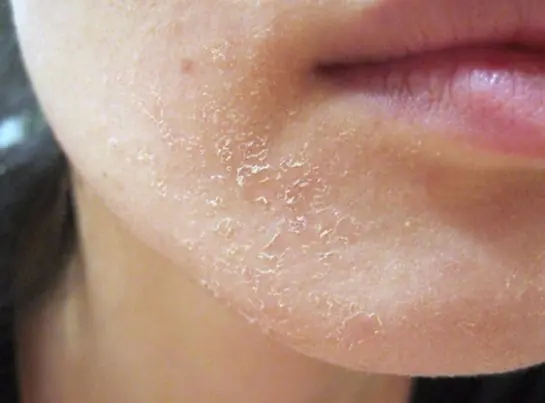
Photo from the site: zdorovoelico.com
Why is the skin on my face so flaky?
What causes severely flaky facial skin? There are many reasons for this condition of the skin. In order to correctly build a treatment regimen, you should determine exactly what caused the dryness and flaking.
- problems with the sebaceous glands;
- age-related disorders in the functioning of the skin (the skin of the face may become very flaky after 35 years);
- diseases that lead to disruptions in body systems that affect the skin;
- lack of nutrients;
- aggressive sunlight that lasts for a long time;
- peeling that is not suitable or is carried out too often;
- using high temperature water with chlorine and soap.
To get rid of skin problems, you need not only to treat them correctly, but also to eliminate the causes of their occurrence. After all, if you skip the last point, then dryness and flaking may return again. All this can be endless. If you eliminate the causes of skin problems, they will disappear.
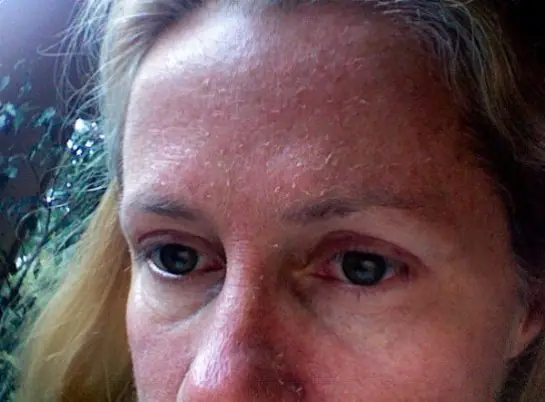
Photo from website: allWomens
What to do if your face is very flaky?
If your face starts to peel off a lot, what should you do? First of all, determine the reasons for this phenomenon. This is best done by a specialist cosmetologist or dermatologist. A suitably qualified person can quickly tell you why the skin's sebaceous glands are not producing the required amount of moisturizing oil. Sometimes additional studies or tests are needed to make a diagnosis. After this, you can proceed directly to fixing the problem.
Facial skin is very peeling, what to do: change care
If the skin on your face has been peeling severely for a short time, then perhaps the problem can be solved by a simple change in your care. What should you pay attention to in this?
First of all, review your washing schedule. It's better to do this only in the evening. Thus, you will perform a hygienic cleansing of your face, but at the same time wash away the protective barrier present on the skin. By morning it will be restored and your skin will again be protected from external influences. If you also wash your face in the morning, your skin will become dry. They will become vulnerable to wind, sun and other factors affecting them.
Please note that the water for washing should be at room temperature. Too hot will dry out the skin, and too cold will also have a negative effect. It is better to use filtered and then boiled liquid, waiting for it to cool.
After washing, you should moisturize your skin with some product. This can be a regular evening cream or lotion.
Don't forget about masks. Dry skin needs them. You can moisturize it in this way twice a week.
When choosing cosmetics, read its composition. It should not contain alcohol, which has a drying effect.

Photo from the site: www.silazdorovya.ru
The skin on the face is very flaky, what to do: procedures with a specialist cosmetologist
If changing your skin care does not have an effect, then you should move on to more serious measures. First of all, contact a cosmetologist. He can offer you:
- hot compress;
- peeling;
- collagen mask;
- special cosmetic massage.
Each of these measures produces its own results. A hot compress affects the blood vessels. It disperses blood through them, which warms the skin, expands pores, and speeds up metabolism. All this improves the appearance and functionality of fabrics. The skin becomes more elastic and soft.
Despite the fact that the skin is dry, in certain cases it needs peeling. It can be chemical and mechanical. During this procedure, the skin loses its keratinized dead cells, it is renewed and looks more youthful.
A collagen mask is an excellent way to moisturize the skin. It also tightens and tones the surface of the face.
Cosmetic massage is also an important procedure. It has a very gentle effect on the skin, while stimulating blood circulation well. It also improves the functionality of the skin, which has a positive effect on its hydration and color.
The advantage of contacting a specialist is that he will be able to tell you exactly why the skin on your face is peeling so much. That is, in this way you will not act at random.
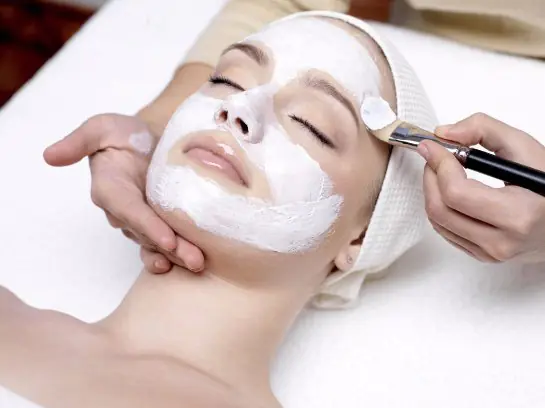
Photo from the site: rossi-med.ru
Very dry facial skin is peeling, what to do at home?
If you do not have the desire or funds to go to a cosmetologist, you will have to help yourself. You can do the same things as described above at home.
Let's start with a hot compress. How to make it? Heat the water to such a temperature that it is hot, but does not burn the skin. Dip a striped towel into it. Apply it to your face. Wait 20 minutes and remove. This procedure relaxes the face and also stimulates blood circulation.
You can also do a steam bath. To do this, brew medicinal herbs. It could be chamomile, lemon balm or something else. Place the hot broth on the table and then bend over it. The head should be covered with a towel for 10 minutes. After the procedure, wash your face with cold water and moisturize your skin with cream.
You can also do facial peeling at home. To do this, use store-bought or homemade remedies.
Don't forget about vitamins. When there are few of them, the skin also suffers. To support it, consume fish oil, as well as vitamins B, A and E.
Drink a lot of water, and regular clean water. It helps saturate the body with moisture, which is good for the skin.
In winter, it is good to install air humidifiers indoors. They maintain normal humidity in the room, which allows the skin to feel normal too.

Photo from the site: voprosu-i-otvety.ru
The skin on the face is very flaky: make homemade masks
It was written above that dry skin needs masks. You can use store-bought products or make them yourself at home. The latter have a big advantage in that they are natural. But you need to be careful with them, because natural ingredients can cause allergies.
Mustard mask
This mask activates blood circulation well. It requires dry mustard and vegetable oil. You need to take a teaspoon of the first ingredient and a tablespoon of the second. Add water to the mixture and stir.
Since this mask warms up the face well, you should keep it on for no longer than five minutes. After this, wash your face with warm water and lubricate it with moisturizer.
Cottage cheese mask
A tablespoon of dairy product is mixed with honey of a liquid consistency. Add warm milk to the mixture. This mask is applied to the face for 15 minutes.
Olive mask
Olive oil perfectly moisturizes the skin. That is why it is indispensable for dry, flaky skin.
Heat the olive oil. Next, dip a cotton swab into the warm liquid and smear it on your face. This mask lasts for half an hour. After this, you should wash your face with warm water. After an olive mask, the face is usually not smeared with anything, as it is sufficiently moisturized. Sometimes even after washing, a thin film remains on the skin.

Photo from website: maskifaceskin.ru
Mint mask
You can also make masks from this aromatic herb. Take about two tablespoons of mint leaves. Pour a glass of boiling water over this and put on fire. Wait three minutes, remove the broth and cool it. The mask is ready. Apply it warm to your face. Leave on for about 15 minutes. After that, rinse off.
Oatmeal mask
An oatmeal mask is very effective if there is severe peeling of the facial skin. It requires oatmeal. Take a tablespoon of them. Next, they should be poured with hot milk (4 tablespoons) and left for 10 minutes. Apply an oatmeal mask to your face for 15 minutes.
Chamomile mask
This mask soothes inflamed skin and also moisturizes it. You need to take two tablespoons of chamomile. Pour a glass of boiling water over the flowers for several hours. After this, mix the chamomile infusion with a tablespoon of butter. In this form, apply the product to your facial skin for 15 minutes. Wash off this mask with warm water.
Apple mask
Apple mask consists of apples and olive oil. Grate the peeled apple and then add 2 teaspoons of olive oil to it. Mix the mixture well and apply on your face. You can keep this mask for 20 minutes.
Cucumber mask
Grate a small cucumber. Add one teaspoon of cream and 4 drops of lemon juice to it. Mix it all and you can use it.
If your skin on your face is very flaky, you already know what to do. Take action and your skin will be the way you want it.



